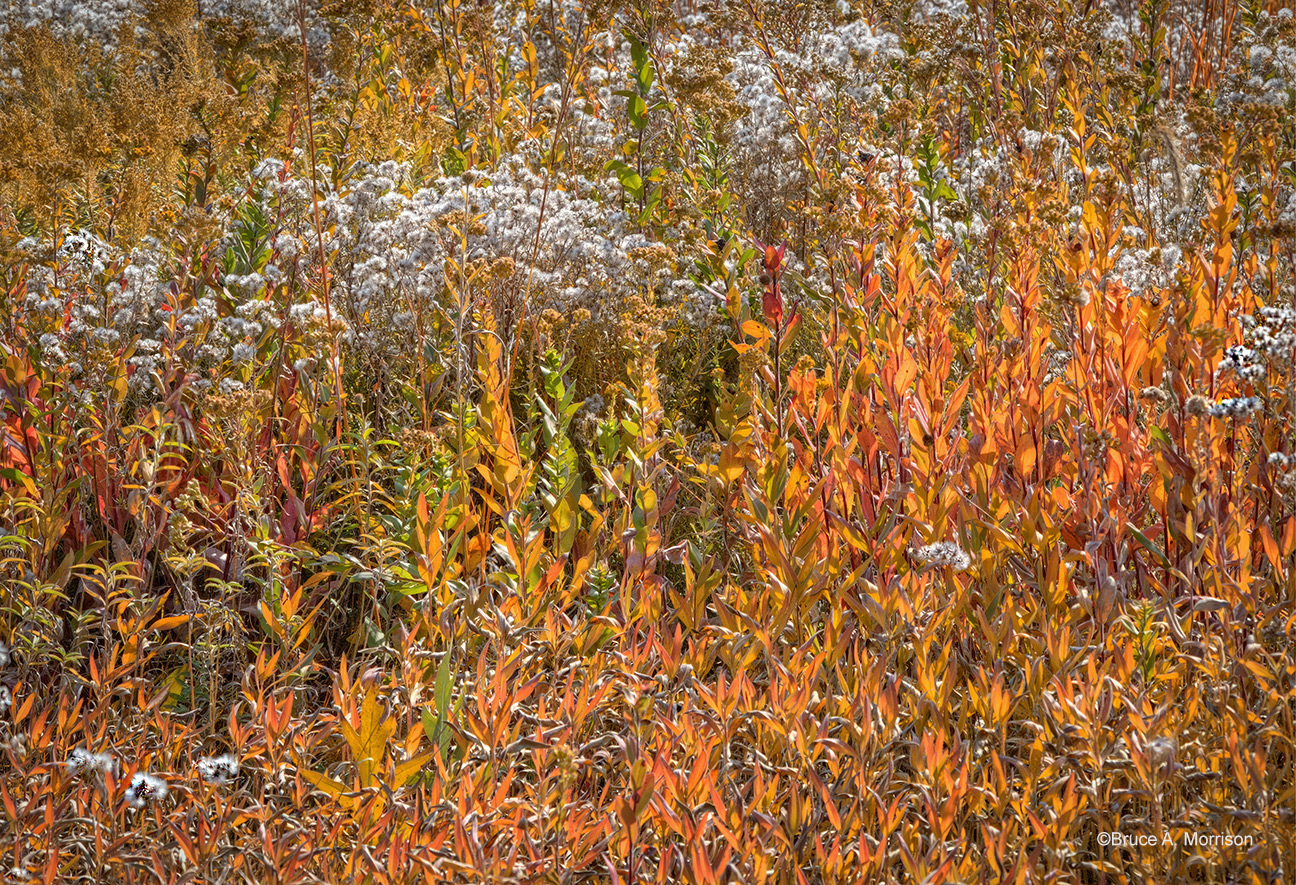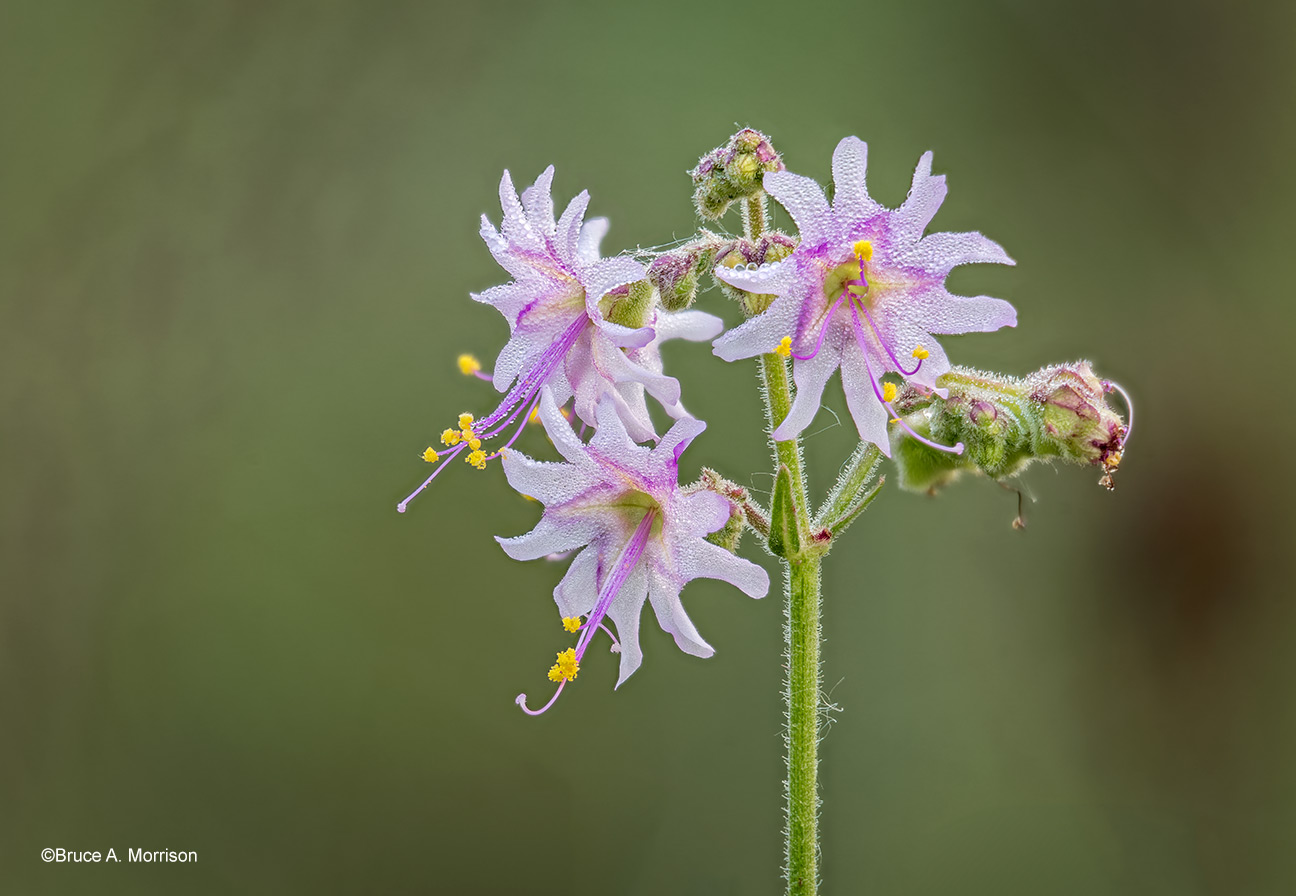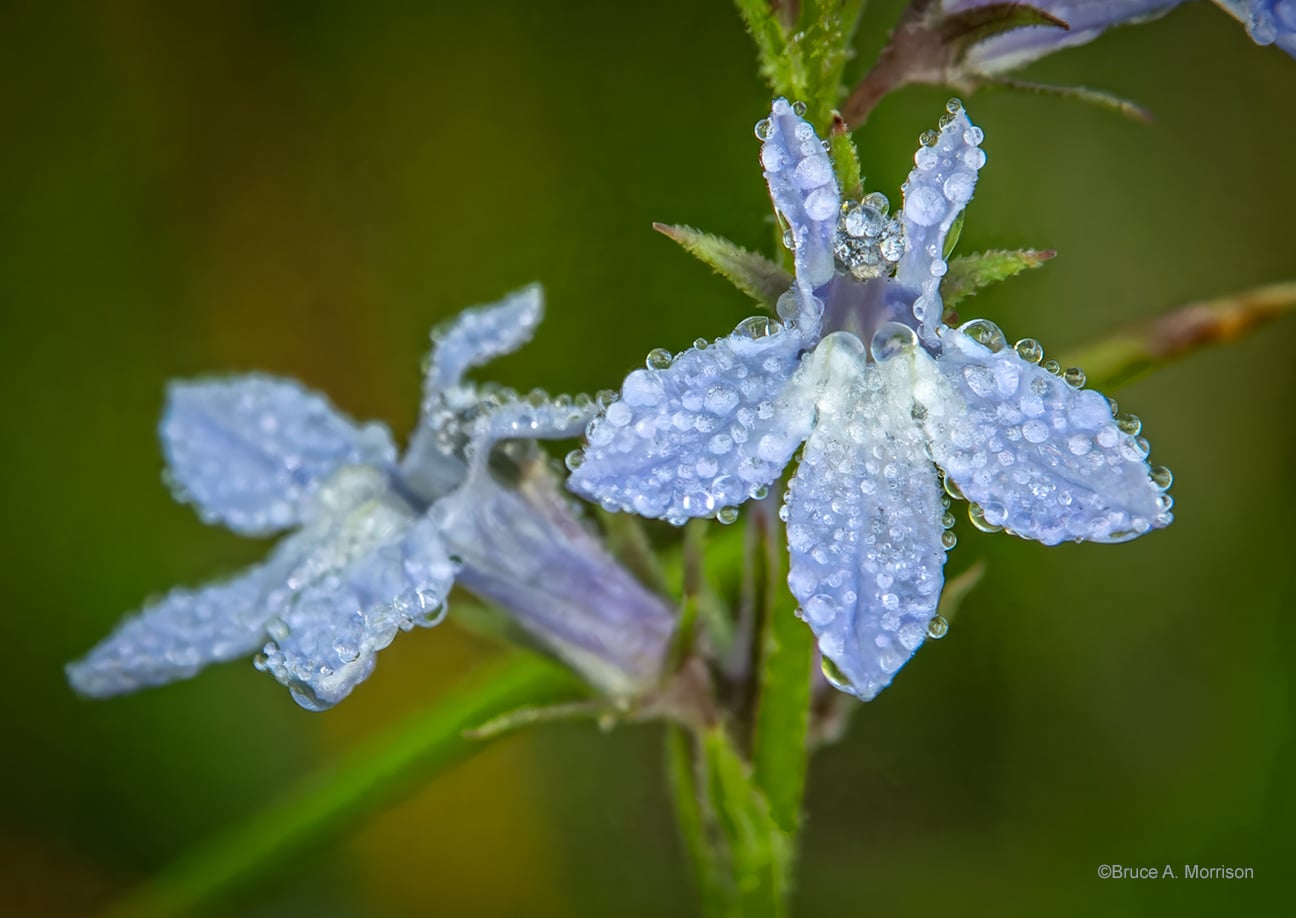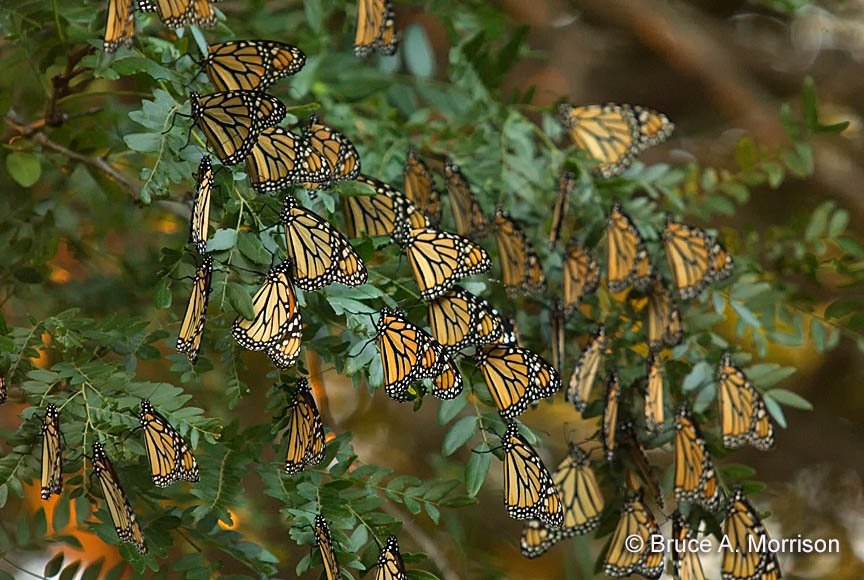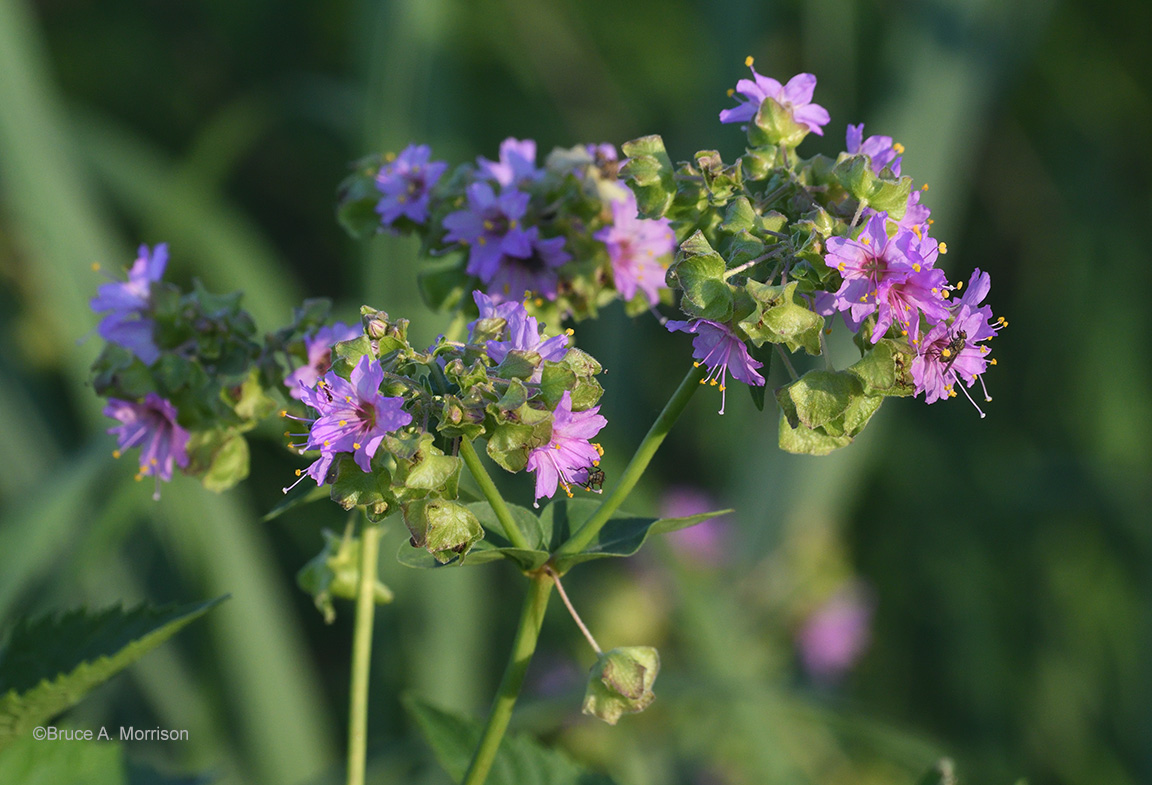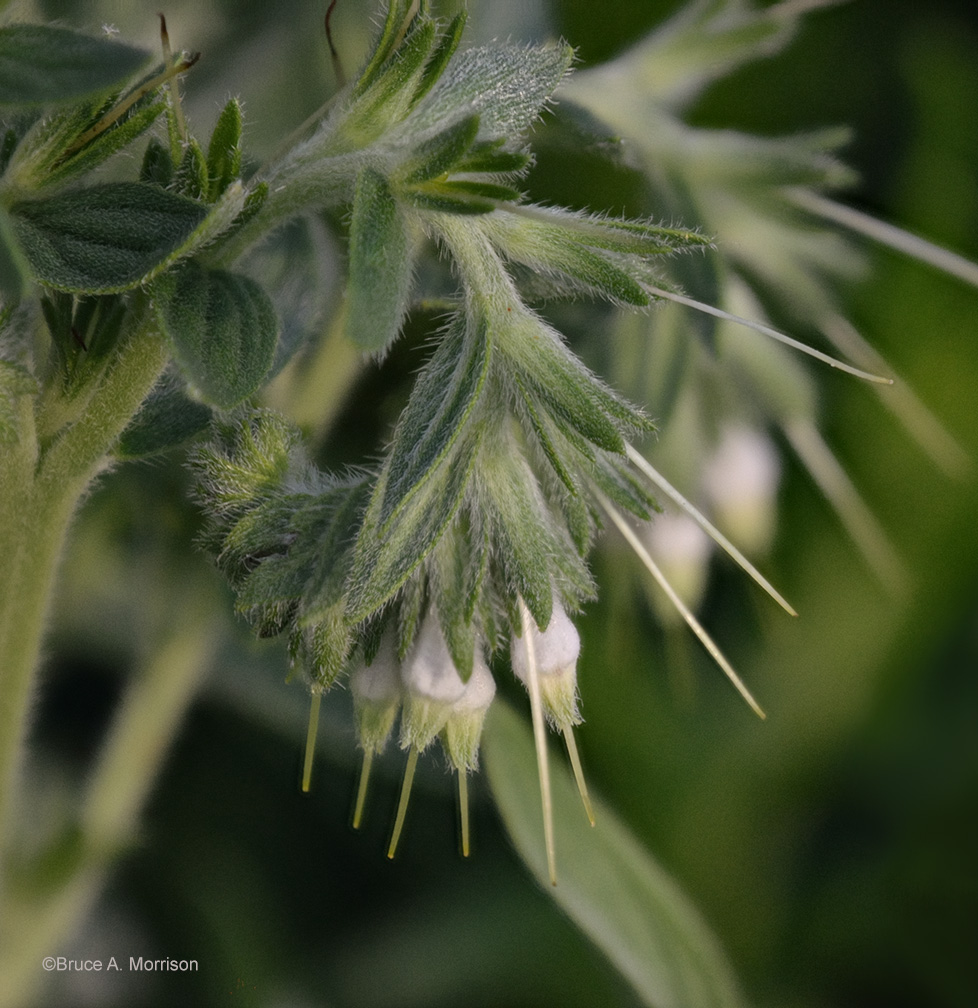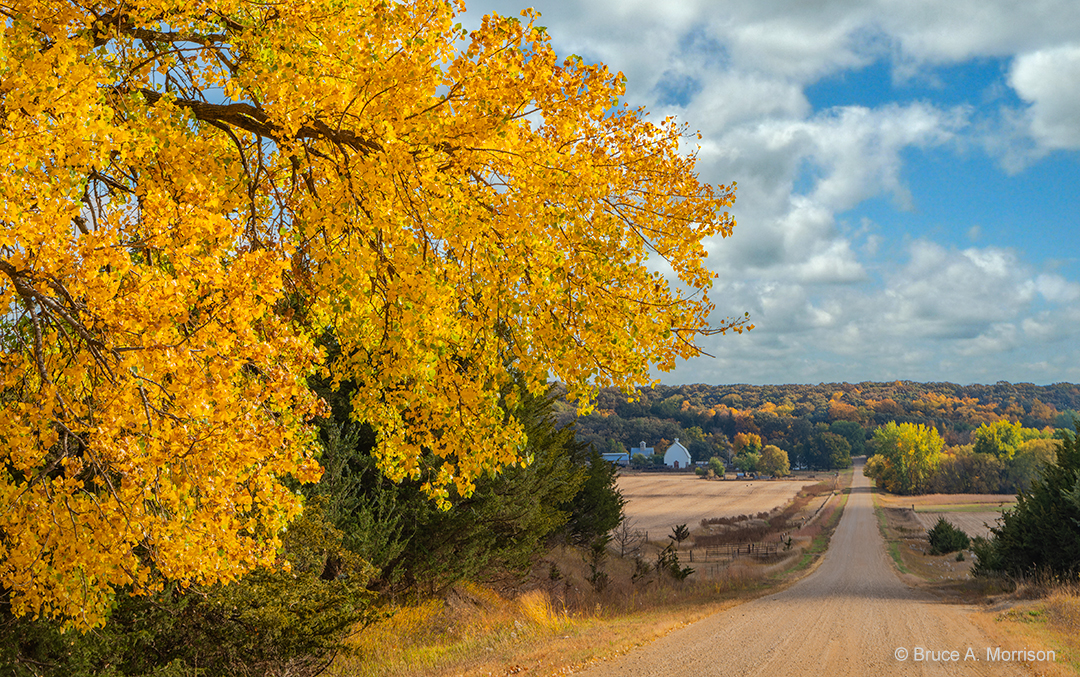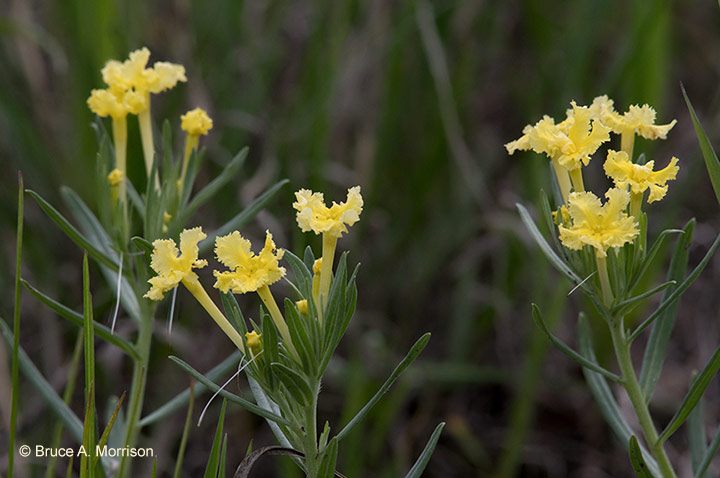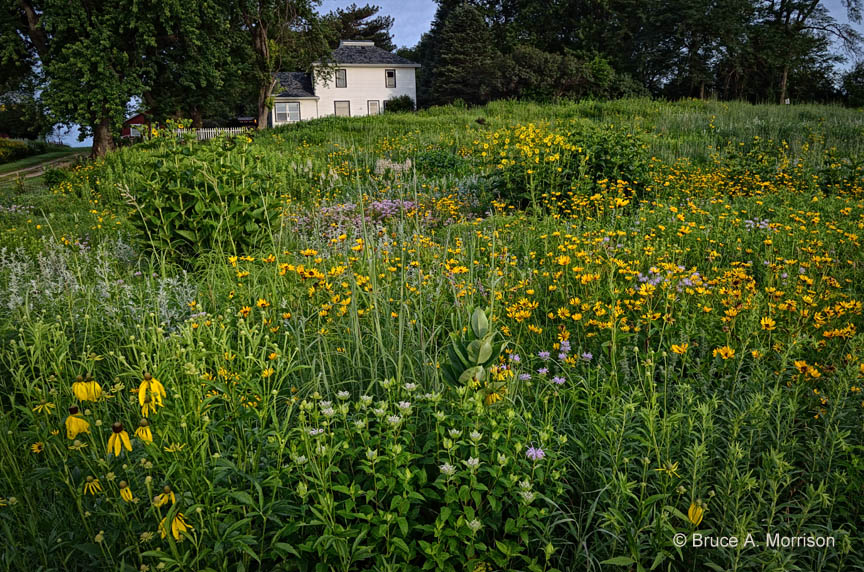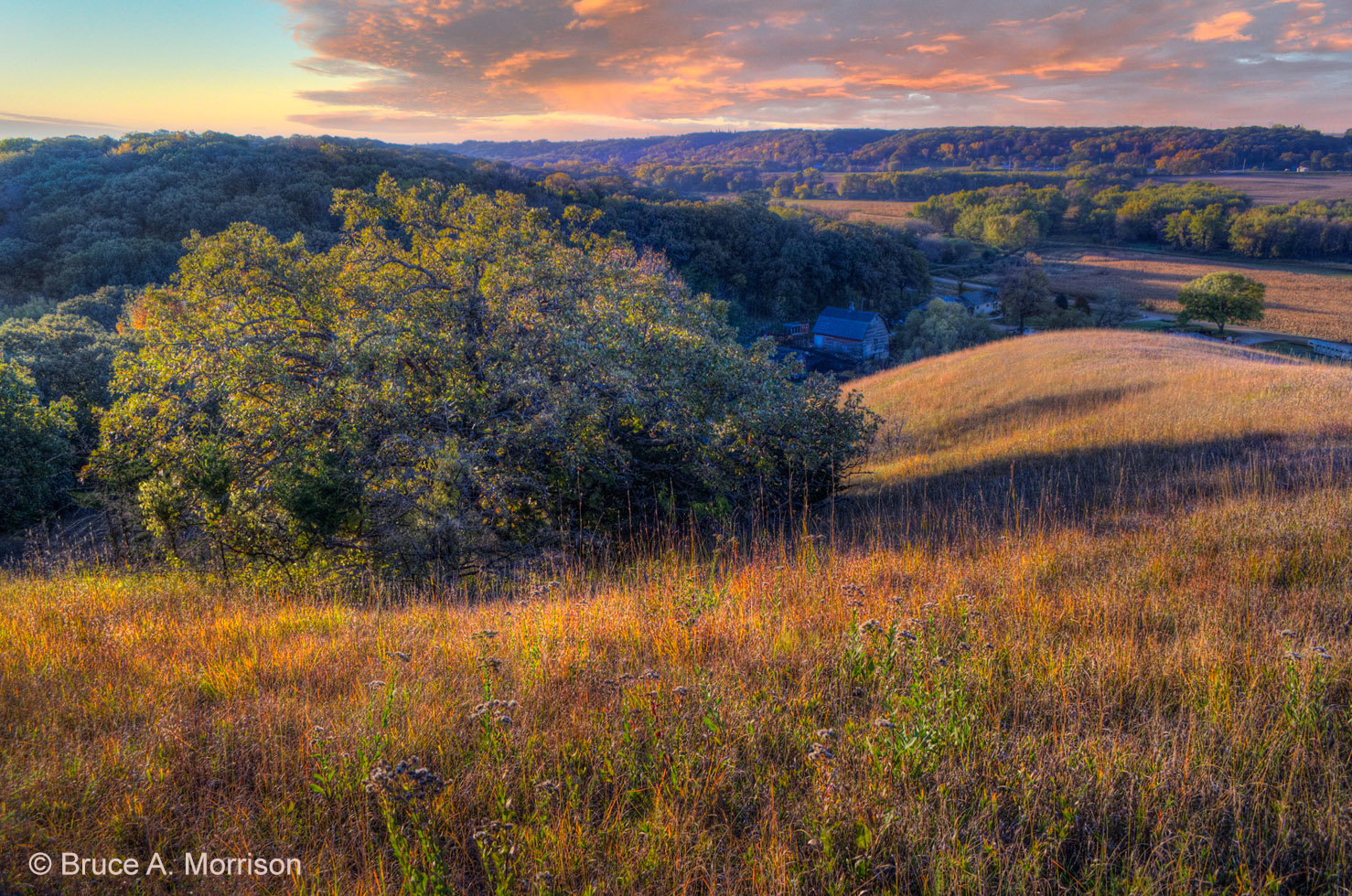Bruce Morrison is a working artist and photographer living with his wife Georgeann in rural southeast O’Brien County, Iowa. Bruce works from his studio/gallery–a renovated late 1920s brooding house/sheep barn. You can follow Morrison on his artist blog, Prairie Hill Farm Studio, or visit his website at Morrison’s studio.
I can’t remember the first time I visited a prairie during the Fall season, but believe it was on Cayler Prairie in Dickinson County. I do remember how struck I was with the color everywhere! It had never occurred to me that prairie habitat would exhibit this color change—duh! So used to autumn color in the forested landscape; the trees that we herald each fall lighting up the scenery with vivid to subtle colors of reds, yellows, orange and ambers! But grasses and plants of prairies? Well, why not?
All plants have the same triggers that cause a color change when autumn arrives. As temperatures drop and daylight duration shortens, chlorophyll (the green pigment) breaks down, revealing other pigments. The carotenoids in differing plants bring on yellows and orange hues as the plant chlorophyll fades. And other plants produce anthocyanins in response to sunlight and cooler temperatures, resulting in red and purple colors. Different species have varying pigment compositions, affecting each type’s fall colors. For instance in the image of Stiff goldenrods (Solidago rigida):
Continue Reading...
